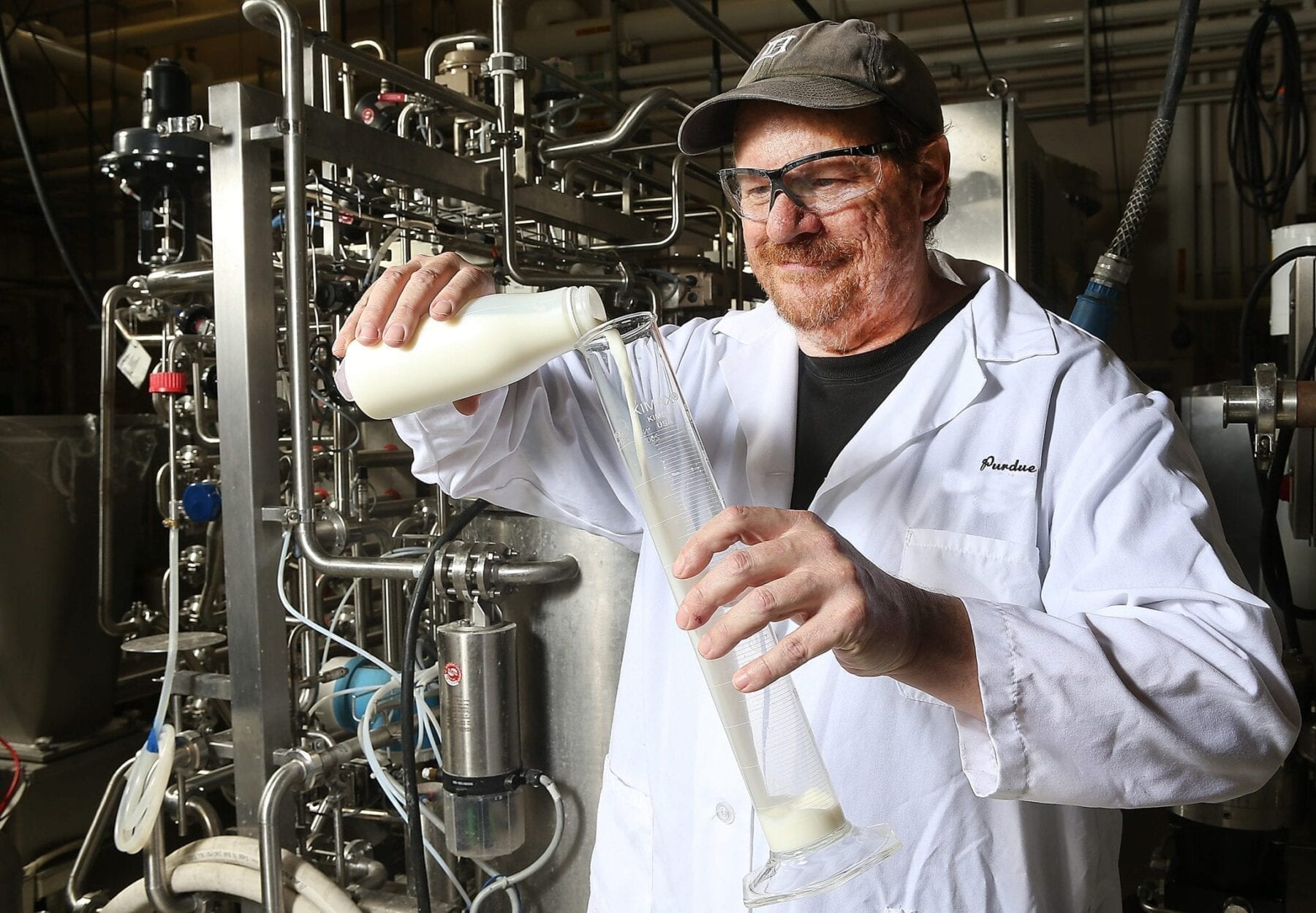![A team of NYU chemists has created malleable and microscopic self-assembling particles that can serve as the next generation of building blocks in the creation of synthetic materials. The research focused on engineering particles a micrometer in width—about 1/200th the width of a strand of human hair (on which the particles [pink and blue] are placed in the above image). Image courtesy of the Sacanna lab.](https://innovationtoronto.com/wp-content/uploads/2016/07/1468337335365.jpg)
Taking a page from Jonathan Swift’s “Gulliver’s Travels”, a team of scientists has created malleable and microscopic self-assembling particles that can serve as the next generation of building blocks in the creation of synthetic materials.
“Our work turns the tiniest of particles from inflexible, Lego-like pieces into ones that can transform themselves into a range of shapes,” explains Stefano Sacanna, an assistant professor in NYU’s Department of Chemistry and the senior author of the paper, which appears in the journal Nature Communications. “With the ability to change their contours, these particles mimic alterations that occur in nature.”
The research focused on engineering particles a micrometer in width—about 1/200th the width of a strand of human hair.
Specifically, it aimed to enhance the adaptability of colloids—small particles suspended within a fluid medium. Such everyday items such as paint, milk, gelatin, glass, and porcelain are composed of colloidal dispersions, but it’s their potential to control the flow of light that has scientists focused on creating exotic colloidal geometries.
By triggering specific morphological changes in the singular colloidal unit, the Sacanna group hopes to advance colloidal crystal engineering.
The scientists discovered that, much like Gulliver tied down by Lilliputians, metallic particles encased in oil droplets were tethered by many chemical bonds. Breaking those tethers via a photocatalytic reaction—in which the absorption of light spurs a chemical response—caused the metallic particle to free itself, producing an overall shape change. In other words, shining a light on a simple crystal allowed the scientists to create a material that transforms its microstructure.
Learn more: Tiny Transformers: Chemists Create Microscopic and Malleable Building Blocks
The Latest on: Colloidal crystal engineering
[google_news title=”” keyword=”colloidal crystal engineering” num_posts=”10″ blurb_length=”0″ show_thumb=”left”]
via Google News
The Latest on: Colloidal crystal engineering
- Microgravity-grown crystals reveal new insights into protein structureson April 29, 2024 at 7:19 am
Biochemists have long been working around a blind spot when it comes to proteins. They know that hydrogen constitutes nearly half of the atoms in proteins, but how they contribute to protein function ...
- Colloidal Suspension Rheologyon April 26, 2024 at 1:31 pm
Colloidal suspensions are encountered in a multitude of natural, biological and industrially relevant products and processes. Understanding what affects the flow behaviour, or rheology, of colloid ...
- Laser Hackson April 23, 2024 at 7:02 pm
Lasers are pretty much magic — it’s all done with mirrors. Not every laser, of course, but in the 1980s, the most common lasers in commercial applications were probably the helium-neon laser ...
- Magnonic Crystals: Harnessing Spin Waves for Information Processingon April 20, 2024 at 3:54 am
These crystals are the magnetic analogs of photonic crystals, which control the flow of light. By engineering the geometry, composition, and arrangement of magnetic materials at the nanoscale, ...
- Nanotechnology Witnesses New Breakthroughon March 7, 2024 at 12:38 am
Kang Hee Ku, Study Lead Author and Professor, School of Energy and Chemical Engineering ... conditions typically associated with colloidal crystal structure and pattern formation.
- Colloidal Suspension Rheologyon June 19, 2023 at 8:51 pm
To register your interest please contact [email protected] providing details of the course you are teaching. Colloidal suspensions are encountered in a multitude of natural, biological and ...
- Group researchon December 8, 2017 at 5:26 am
We have begun a study of tunable 3D colloidal photonic crystals for display purposes ... the University theme on and Professor Rorison is the Electrical and Electronic Engineering representative. The ...
- Engineering and Innovative Technology Developmenton March 13, 2016 at 5:20 am
HDPCG (High Density Protein Crystal Growth) is intended to demonstrate the scientific and commercial value of protein crystallization on a long-duration microgravity mission. HDPCG consists of ...
- Handheld HDPCGon February 28, 2016 at 7:46 am
The main purpose of the Handheld HDPCG (High Density Protein Crystal Growth) experiment is to grow large, well ordered protein crystals in microgravity for highly medically relevant proteins that are ...
- CHEN.5060 Colloidal, Interfacial and Nanomaterials Science and Engineering (Formerly 10.506)on December 4, 2015 at 6:48 pm
Unifying principle and the three main classes of colloids (dispersions, macromolecular solutions and micelles) are considered. Topics covered include surface tension, work and energy, effect of ...
via Bing News










